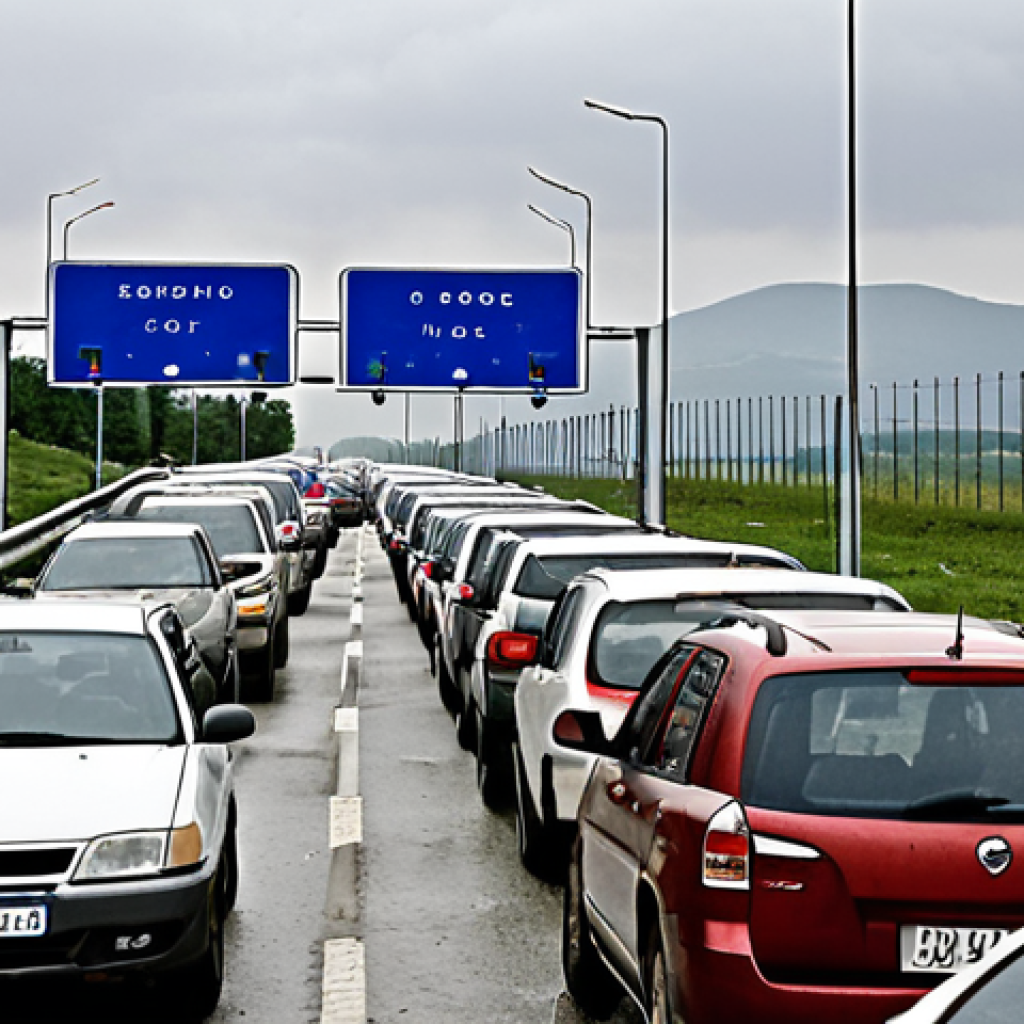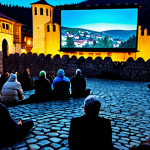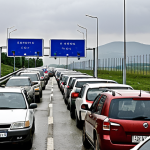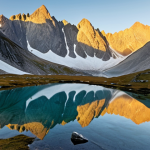Planning a trip from Kosovo to Serbia? I know, border crossings can be a bit daunting, especially in the Balkans! I remember the first time I crossed a border in this region; I was a little nervous about the process.
But honestly, with a little preparation, it’s usually quite straightforward. The Kosovo-Serbia border has its own set of unique nuances, of course, given the history.
In recent years, there’s been increased talk about smoother transit, even potential future EU integration impacting border policies, though things are still evolving.
Plus, keep an eye out for news regarding visa requirements and any potential travel advisories, as these can change rapidly. Let’s explore the ins and outs of traveling from Kosovo to Serbia so you can navigate the journey with confidence!
Navigating the Kosovo-Serbia Border: What You Need to KnowTraveling between Kosovo and Serbia requires some planning, but it’s very doable! Over the years, I’ve picked up some useful tips that can make the journey smoother.
Remember that the political situation can affect border policies, so staying informed is key. I learned this firsthand when a friend was almost denied entry due to an outdated piece of information.
These days, with increased dialogue between the countries, things have generally improved, but it’s still wise to be prepared.
Understanding Travel Documents and Entry Requirements
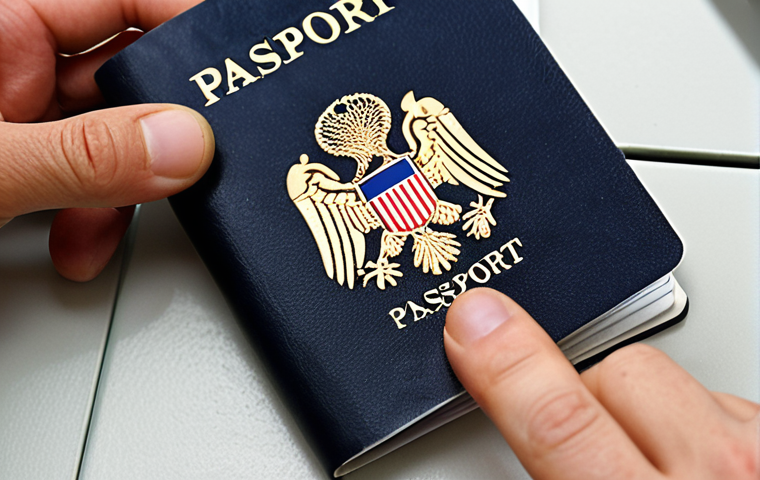
When it comes to crossing the Kosovo-Serbia border, having the right documents is crucial. I once saw someone turned away because their passport was expiring in less than three months!
Don’t let that be you.
Passport and Visa Essentials
Make sure your passport is valid for at least six months beyond your intended stay. Depending on your nationality, you may need a visa. For instance, U.S.
citizens typically don’t need a visa for short tourist stays. However, policies can change, so always check the latest regulations on the Serbian Ministry of Foreign Affairs website.
It’s also good practice to have a copy of your passport stored separately, just in case.
Recognizing Kosovo Travel Documents in Serbia
Serbia doesn’t recognize Kosovo as an independent state, which can complicate things. If you’re entering Serbia from Kosovo, you might need to obtain a Serbian entry stamp at the border to avoid potential issues later.
Once, I forgot to do this and faced some questioning when trying to leave Serbia through a different border crossing. Learn from my mistake and get that stamp!
What to do about Driver’s License and Car Insurance Requirements
If you’re planning to drive, ensure your driver’s license is valid, and you have the necessary car insurance. You might need a Green Card, which is an international certificate of insurance, to drive legally in Serbia.
I usually get mine from my insurance provider before I leave. It’s also a good idea to carry your vehicle registration documents.
Choosing the Right Border Crossing Point
Not all border crossings are created equal. Some are busier than others, and some might be better equipped to handle international travelers.
Key Border Crossings: Merdare, Jarinje, and more
The Merdare border crossing is one of the most frequently used. However, this also means it can get quite crowded, especially during peak travel season.
Jarinje is another option, but it has been subject to closures and increased security measures in the past, so check for updates before heading there.
Other crossings like Bërnjak and Mutivode might be less crowded, but could have limited facilities.
Considering Traffic Conditions and Wait Times
Always check traffic conditions before you set off. Websites like Google Maps or local traffic news sites can provide real-time updates on traffic jams and border wait times.
During holidays or weekends, wait times can be significantly longer. Trust me, spending an extra hour or two stuck in line is no fun.
Facilities and Services at Different Border Crossings
Consider what facilities are available at each crossing. Some have currency exchange offices, restrooms, and even small shops. If you’re traveling with children or have specific needs, this can make a big difference.
Some crossings may also have limited hours, so double-check their operating schedules.
Understanding Customs and Border Procedures
Customs and border procedures can seem intimidating, but knowing what to expect can make the process smoother.
Declaring Goods and Currency
Be aware of what you’re allowed to bring across the border. There are limits on the amount of alcohol, tobacco, and currency you can carry. If you’re carrying large sums of money, you may need to declare it.
I once forgot to declare some expensive camera equipment and had to deal with some awkward questions from customs officials. Don’t make the same mistake.
What to Expect During Border Control Checks
Border control officers will typically ask you questions about your trip, such as your purpose of visit, how long you plan to stay, and where you’re staying.
Be prepared to answer these questions clearly and honestly. They may also ask to see your travel itinerary or proof of accommodation.
Navigating Security Measures
Security measures at the border can be tight, especially given the political context. Be prepared for thorough vehicle and baggage searches. Cooperation and patience are key.
Remember, border officials are just doing their job.
Finding Accommodation and Transportation
Once you’ve crossed the border, you’ll need to figure out accommodation and transportation.
Options for Accommodation in Serbia
Serbia offers a range of accommodation options, from budget-friendly hostels to luxury hotels. Booking in advance is always a good idea, especially during peak season.
Websites like Booking.com and Airbnb offer a wide selection of options. I once arrived in Belgrade without a reservation and spent hours searching for a decent hotel.
Learn from my experience and book ahead.
Public Transportation vs. Renting a Car
Public transportation in Serbia is generally reliable and affordable. Buses and trains connect major cities, but schedules can be limited in more remote areas.
Renting a car gives you more flexibility, but be aware that driving conditions can be challenging in some parts of the country. Parking in cities can also be difficult and expensive.
Local Transportation Tips
If you opt for public transportation, familiarize yourself with the local bus or train schedules. Buying tickets in advance can often save you time and money.
If you’re driving, be aware of local traffic laws and speed limits. Also, keep an eye out for potholes, which can be common on some roads. Here is a table summarizing key aspects of crossing the Kosovo-Serbia border:
| Aspect | Details | Tips |
|---|---|---|
| Documents | Passport, Visa (if required), Driver’s License, Car Insurance (Green Card) | Ensure passport validity, check visa requirements, carry copies |
| Border Crossings | Merdare, Jarinje, Bërnjak, Mutivode | Check traffic conditions, consider facilities, check operating hours |
| Customs | Declaration of goods and currency, security checks | Be aware of limits, cooperate with officials, be patient |
| Accommodation | Hotels, hostels, Airbnb | Book in advance, consider location and amenities |
| Transportation | Public transport (buses, trains), rental cars | Familiarize with schedules, be aware of driving conditions |
Staying Safe and Informed
Traveling in the Balkans can be an adventure, but it’s important to stay safe and informed.
Understanding Local Laws and Customs
Respect local laws and customs. Dress modestly when visiting religious sites. Be aware of local sensitivities, especially regarding political issues.
Avoid discussing controversial topics with strangers. I once made an innocent comment about a political situation and quickly realized I had touched a nerve.
Health Precautions and Travel Insurance
Make sure you have adequate travel insurance that covers medical emergencies. Bring any necessary medications with you, along with a copy of your prescription.
Be aware of local health risks, such as tick-borne diseases. Consider getting vaccinated before you travel.
Staying Updated on Political Developments
The political situation in the region can change rapidly. Stay updated on the latest developments by following reputable news sources. Be aware of any travel advisories issued by your government.
Avoid areas where protests or demonstrations are taking place. I always check the news before and during my trip.
Enjoying the Journey
Despite the challenges, traveling between Kosovo and Serbia can be a rewarding experience.
Exploring Cultural Sites in Serbia
Serbia is rich in history and culture. Visit historical sites like the Belgrade Fortress, monasteries like Studenica, and museums like the National Museum of Serbia.
Each offers a unique glimpse into the country’s past. I was blown away by the beauty of the Studenica Monastery.
Trying Local Cuisine
Don’t miss the opportunity to try local cuisine. Serbia is known for its hearty dishes like ćevapi, pljeskavica, and sarma. Try local specialties like kajmak (a type of clotted cream) and ajvar (a roasted red pepper spread).
I always make it a point to sample local dishes when I travel.
Meeting Local People
One of the best parts of traveling is meeting local people. Serbians are generally friendly and welcoming. Strike up conversations with locals, ask for recommendations, and learn about their culture.
I’ve made some lifelong friends during my travels in Serbia. Remember to be respectful and open-minded. Crossing the Kosovo-Serbia border can be complex, but with the right preparation and information, it’s manageable.
Always stay updated on the latest regulations, respect local customs, and prioritize your safety. Remember, the journey is just as important as the destination, so take your time and enjoy the experience!
Navigating the Kosovo-Serbia border requires some planning, but it’s very doable! Over the years, I’ve picked up some useful tips that can make the journey smoother.
Remember that the political situation can affect border policies, so staying informed is key. I learned this firsthand when a friend was almost denied entry due to an outdated piece of information.
These days, with increased dialogue between the countries, things have generally improved, but it’s still wise to be prepared.
Understanding Travel Documents and Entry Requirements
When it comes to crossing the Kosovo-Serbia border, having the right documents is crucial. I once saw someone turned away because their passport was expiring in less than three months! Don’t let that be you.
Passport and Visa Essentials
Make sure your passport is valid for at least six months beyond your intended stay. Depending on your nationality, you may need a visa. For instance, U.S. citizens typically don’t need a visa for short tourist stays. However, policies can change, so always check the latest regulations on the Serbian Ministry of Foreign Affairs website. It’s also good practice to have a copy of your passport stored separately, just in case.
Recognizing Kosovo Travel Documents in Serbia
Serbia doesn’t recognize Kosovo as an independent state, which can complicate things. If you’re entering Serbia from Kosovo, you might need to obtain a Serbian entry stamp at the border to avoid potential issues later. Once, I forgot to do this and faced some questioning when trying to leave Serbia through a different border crossing. Learn from my mistake and get that stamp!
What to do about Driver’s License and Car Insurance Requirements
If you’re planning to drive, ensure your driver’s license is valid, and you have the necessary car insurance. You might need a Green Card, which is an international certificate of insurance, to drive legally in Serbia. I usually get mine from my insurance provider before I leave. It’s also a good idea to carry your vehicle registration documents.
Choosing the Right Border Crossing Point
Not all border crossings are created equal. Some are busier than others, and some might be better equipped to handle international travelers.
Key Border Crossings: Merdare, Jarinje, and more
The Merdare border crossing is one of the most frequently used. However, this also means it can get quite crowded, especially during peak travel season. Jarinje is another option, but it has been subject to closures and increased security measures in the past, so check for updates before heading there. Other crossings like Bërnjak and Mutivode might be less crowded, but could have limited facilities.
Considering Traffic Conditions and Wait Times
Always check traffic conditions before you set off. Websites like Google Maps or local traffic news sites can provide real-time updates on traffic jams and border wait times. During holidays or weekends, wait times can be significantly longer. Trust me, spending an extra hour or two stuck in line is no fun.
Facilities and Services at Different Border Crossings
Consider what facilities are available at each crossing. Some have currency exchange offices, restrooms, and even small shops. If you’re traveling with children or have specific needs, this can make a big difference. Some crossings may also have limited hours, so double-check their operating schedules.
Understanding Customs and Border Procedures
Customs and border procedures can seem intimidating, but knowing what to expect can make the process smoother.
Declaring Goods and Currency
Be aware of what you’re allowed to bring across the border. There are limits on the amount of alcohol, tobacco, and currency you can carry. If you’re carrying large sums of money, you may need to declare it. I once forgot to declare some expensive camera equipment and had to deal with some awkward questions from customs officials. Don’t make the same mistake.
What to Expect During Border Control Checks
Border control officers will typically ask you questions about your trip, such as your purpose of visit, how long you plan to stay, and where you’re staying. Be prepared to answer these questions clearly and honestly. They may also ask to see your travel itinerary or proof of accommodation.
Navigating Security Measures
Security measures at the border can be tight, especially given the political context. Be prepared for thorough vehicle and baggage searches. Cooperation and patience are key. Remember, border officials are just doing their job.
Finding Accommodation and Transportation
Once you’ve crossed the border, you’ll need to figure out accommodation and transportation.
Options for Accommodation in Serbia
Serbia offers a range of accommodation options, from budget-friendly hostels to luxury hotels. Booking in advance is always a good idea, especially during peak season. Websites like Booking.com and Airbnb offer a wide selection of options. I once arrived in Belgrade without a reservation and spent hours searching for a decent hotel. Learn from my experience and book ahead.
Public Transportation vs. Renting a Car
Public transportation in Serbia is generally reliable and affordable. Buses and trains connect major cities, but schedules can be limited in more remote areas. Renting a car gives you more flexibility, but be aware that driving conditions can be challenging in some parts of the country. Parking in cities can also be difficult and expensive.
Local Transportation Tips
If you opt for public transportation, familiarize yourself with the local bus or train schedules. Buying tickets in advance can often save you time and money. If you’re driving, be aware of local traffic laws and speed limits. Also, keep an eye out for potholes, which can be common on some roads.
Here is a table summarizing key aspects of crossing the Kosovo-Serbia border:
| Aspect | Details | Tips |
|---|---|---|
| Documents | Passport, Visa (if required), Driver’s License, Car Insurance (Green Card) | Ensure passport validity, check visa requirements, carry copies |
| Border Crossings | Merdare, Jarinje, Bërnjak, Mutivode | Check traffic conditions, consider facilities, check operating hours |
| Customs | Declaration of goods and currency, security checks | Be aware of limits, cooperate with officials, be patient |
| Accommodation | Hotels, hostels, Airbnb | Book in advance, consider location and amenities |
| Transportation | Public transport (buses, trains), rental cars | Familiarize with schedules, be aware of driving conditions |
Staying Safe and Informed
Traveling in the Balkans can be an adventure, but it’s important to stay safe and informed.
Understanding Local Laws and Customs
Respect local laws and customs. Dress modestly when visiting religious sites. Be aware of local sensitivities, especially regarding political issues. Avoid discussing controversial topics with strangers. I once made an innocent comment about a political situation and quickly realized I had touched a nerve.
Health Precautions and Travel Insurance
Make sure you have adequate travel insurance that covers medical emergencies. Bring any necessary medications with you, along with a copy of your prescription. Be aware of local health risks, such as tick-borne diseases. Consider getting vaccinated before you travel.
Staying Updated on Political Developments
The political situation in the region can change rapidly. Stay updated on the latest developments by following reputable news sources. Be aware of any travel advisories issued by your government. Avoid areas where protests or demonstrations are taking place. I always check the news before and during my trip.
Enjoying the Journey
Despite the challenges, traveling between Kosovo and Serbia can be a rewarding experience.
Exploring Cultural Sites in Serbia
Serbia is rich in history and culture. Visit historical sites like the Belgrade Fortress, monasteries like Studenica, and museums like the National Museum of Serbia. Each offers a unique glimpse into the country’s past. I was blown away by the beauty of the Studenica Monastery.
Trying Local Cuisine
Don’t miss the opportunity to try local cuisine. Serbia is known for its hearty dishes like ćevapi, pljeskavica, and sarma. Try local specialties like kajmak (a type of clotted cream) and ajvar (a roasted red pepper spread). I always make it a point to sample local dishes when I travel.
Meeting Local People
One of the best parts of traveling is meeting local people. Serbians are generally friendly and welcoming. Strike up conversations with locals, ask for recommendations, and learn about their culture. I’ve made some lifelong friends during my travels in Serbia. Remember to be respectful and open-minded.
Crossing the Kosovo-Serbia border can be complex, but with the right preparation and information, it’s manageable. Always stay updated on the latest regulations, respect local customs, and prioritize your safety. Remember, the journey is just as important as the destination, so take your time and enjoy the experience!
In Conclusion
Traveling between Kosovo and Serbia may seem daunting, but with careful planning and awareness, it can be a smooth and enriching experience. Staying informed, respecting local customs, and prioritizing safety are key. Embrace the adventure, immerse yourself in the culture, and create lasting memories.
Useful Tips
1. Always carry a copy of your passport and visa (if applicable) separately from the originals.
2. Learn a few basic Serbian phrases to enhance your interactions with locals.
3. Download offline maps and translation apps on your phone.
4. Inform your bank about your travel plans to avoid any issues with your credit or debit cards.
5. Check the weather forecast and pack accordingly. Serbia experiences a wide range of temperatures throughout the year.
Key Takeaways
Traveling between Kosovo and Serbia requires careful preparation and awareness of the political context. Ensure you have the necessary documents, stay informed about border policies, and respect local customs. By doing so, you can have a safe and rewarding travel experience.
Frequently Asked Questions (FAQ) 📖
Q: What documents do I need to cross the Kosovo-Serbia border?
A: From my experience, the documents you’ll need can vary depending on your nationality. Generally, a valid passport is a must. For some nationalities, a visa might be required for Serbia, even if you don’t need one for Kosovo, so definitely check the Serbian Ministry of Foreign Affairs website well in advance.
Also, if you’re driving, make sure your car insurance is valid in both Kosovo and Serbia; you might need to purchase additional coverage at the border.
I once forgot to check my car insurance and ended up scrambling to find a broker near the border – not a fun experience!
Q: Are there any political sensitivities or things to be aware of when crossing between Kosovo and Serbia?
A: Absolutely. Traveling between Kosovo and Serbia isn’t like crossing other European borders, unfortunately. Political tensions are still present.
Serbia doesn’t recognize Kosovo’s independence, so you might encounter questions about your travel history if you’ve entered Kosovo directly from a country other than Serbia.
Also, be mindful of displaying any national symbols that could be considered provocative. I’ve heard stories of people having minor issues because of car stickers or clothing.
It’s best to be respectful and discreet. A friend of mine who’s into photography had his camera checked extra thoroughly, just because he had been photographing some monuments in Pristina.
Q: What’s the best way to travel between Pristina and Belgrade, and are there any recommended routes?
A: The most common way to travel between Pristina and Belgrade is by bus. Several bus companies operate daily routes, and it’s generally a safe and reliable option.
I remember taking a bus once and the scenery was actually quite beautiful – rolling hills and small villages. However, the journey can be long, typically around 6-8 hours, depending on border crossing wait times.
Alternatively, you can hire a private car or taxi, but this will be significantly more expensive. As for routes, stick to the main highways, as these are generally better maintained.
Avoid smaller, less traveled roads, especially if you’re not familiar with the area. And of course, always check for the latest travel advisories before you go!
📚 References
Wikipedia Encyclopedia
구글 검색 결과
구글 검색 결과
구글 검색 결과
구글 검색 결과
구글 검색 결과
